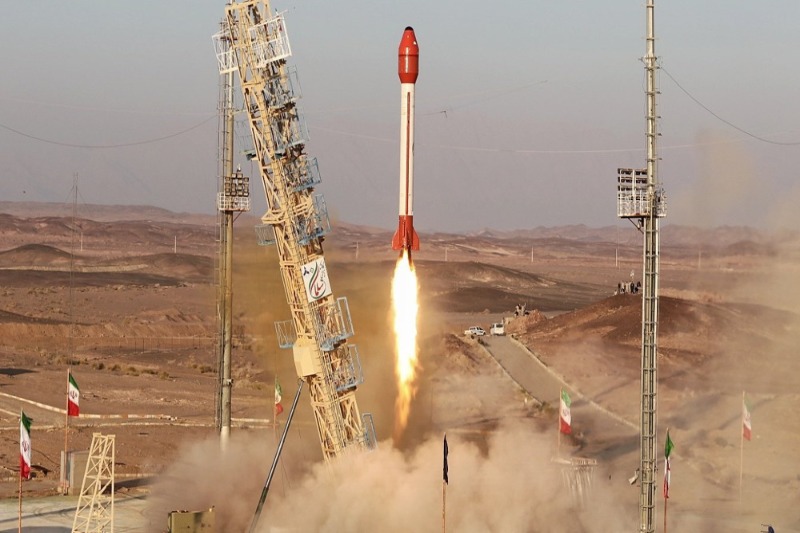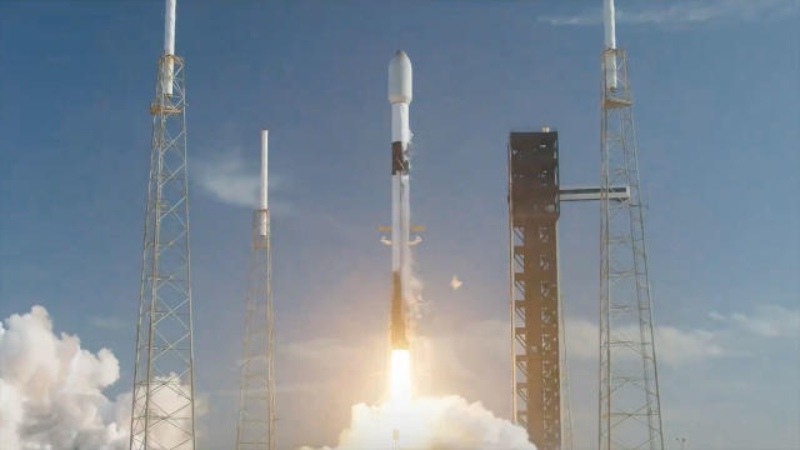The successful launch of Iran’s experimental Kavous space capsule marks a major milestone in the country’s efforts to become the fourth to send astronauts into space.
Launched at the Imam Khomeini Space Center in Semnan Province, Iran’s newest bioastronautical capsule was successfully placed into orbit using the locally produced Salman rocket.
The Ministry of Science, Research, and Technology of Iran’s Aerospace Research Institute (ARI) constructed the 500-kilogram capsule, which was launched to a height of 130 kilometers and returned safely.
The launch is a step toward sending people into space as part of the Iranian government’s ambition to revitalize the space industry and advance the field of bioastronautics.
Which prior bioastronautic flights have Iran conducted?
The Iranian Space Agency’s (ISA) chief formally confirmed the country’s human space program in August 2008, following the initial unauthorized statements about it in the mid-2000s.
Subsequently, the Aerospace Research Institute (ARI) disclosed that the bioastronautical program started in 2002 when the science and defense ministries reached a consensus on a cooperative space program.
The first concrete actions were taken by Iran in November 2008 when they used a Kavoushgar-2 (B) rocket to launch an experimental biocapsule to a height of 40 kilometers.
The same rocket carried cold-blooded creatures—more precisely, turtles, mice, and worms—on a 55-kilometer atmospheric journey in February 2010.
The “Design, Construction and Launch of Space Probes with Living Organisms” program was designated as being of national importance that same year.
Two years after the first Omid satellite was launched in 2009, in March 2011, a Kavoushgar-4 (C) rocket carrying an experimental biocapsule for warm-blooded animals was launched above the Kamran line at a suborbital altitude of 135 km.
The Kavoushgar-4/8 (C) is a modified SRBM Fateh-110 with a range of 300 km, while the Kavoushgar-2/3 (B) atmospheric launch missile is a modified variant of the SRBM Naze’at with a range of 100 km.
Following two additional biocapsule launches in September 2011 and September 2012, the rhesus monkeys Pishgam and Farjam were launched into space in January and December of 2013, respectively, on 120 km suborbital missions.
With this achievement, Iran joined the two Cold War superpowers, France, China, and Japan as the sixth nation to successfully launch animals into space.
Iran was able to independently investigate space creatures thanks to these trips, which coincided with the construction of new launch vehicles and human spacecraft.
What is the space capsule Kavous?
The Kavous space capsule is an experimental one-person spacecraft intended to make a brief space flight over the 100 kilometer Kamran line and survive reentry back to Earth.
Technically speaking, it is an unmanned boilerplate spacecraft that is used to verify and enhance the final crewed spacecraft by testing materials, instrumentation, stage configuration, design, and their behavior during flight.
Because it takes materials that can withstand temperatures as high as a few thousand degrees Celsius to reenter the atmosphere, a functional human capsule is a challenging engineering achievement.
Controlled reentry with tolerating g-forces is also required in addition to structural durability, since high ones can be fatal to humans.
Researchers and experts from the Iranian Space Research Center first exhibited a mock-up of Iran’s human capsule, known as the E1 capsule, at a technology exhibition in February 2015.
With a height of 2,475 meters and a conventional conical shape, it can accommodate one astronaut, according to the Aerospace Research Institute (ARI). Its outer diameter is 2 meters.
This diameter, which is also visible when installed atop the narrower Salman launch vehicle, is greater than that of any Iranian active launch vehicles, including Safir, Qased (1.25 m), Zuljanah, and the second stage of Simorgh (1.5 m).
Given that the Kavous space capsule weighs 500 kg, which is twice the Simorgh payload’s orbital capability, it is likely designed for suborbital travel with Iran’s existing technological capabilities.
The development of a 1.5-ton capsule in two years, according to ISA head Hassan Salarieh, is the next stage, implying that more potent launch vehicles than the current ones are in development.
In contrast, the American capsule MR-3 Freedom 7, which Alan Shepard used for a brief suborbital flight, has a mass of 1.8 tons, while the Soviet capsule Vostok 3KA, which carried the first man in space, Yuri Gagarin, did one orbital revolution with, has a mass of 2.5 tons.
Both nations experienced four failures with experimental, frequently lighter boilerplates of the Vostok and Mercury missions, respectively, prior to their successful launches.
Salarieh claims that Kavous made a successful landing on Earth’s surface, with the exception of a small issue with one of the parachutes. All of the instruments, however, continued to function as intended.
He added that before Iran launches its first man into space, a number of additional test missions with larger and more sophisticated test capsules are scheduled.
Topics #Iranian astronauts #Kavous #space










